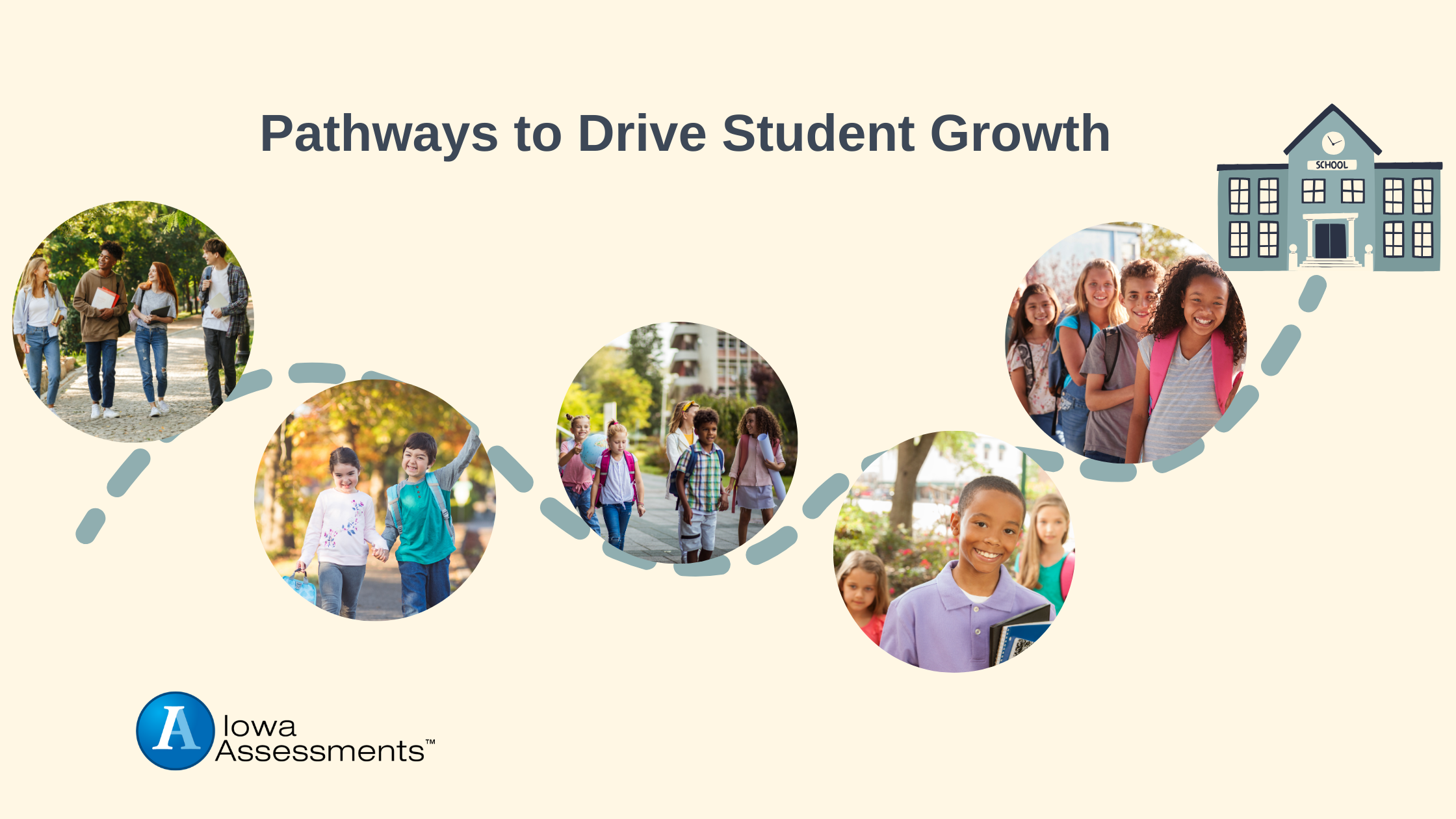
"The standard score allows educators to move students forward using the path that best meets their learning needs and goals."
Every student has a unique story and trajectory along an individualized learning pathway. To help every student grow to their fullest potential, educators seek a combination of proven and creative solutions. The standard score that the Iowa Assessments provides is a visual and tangible way to measure the rate of learning and the amount of growth occurring throughout the year, as well as year-over-year. Since every student enters the classroom at a different level of readiness, the standard score allows educators to move students forward using the path that best meets their learning needs and goals.
The Iowa Assessments recognize that students begin at different places and grow at different rates. The standard score scale of the Iowa Assessments clearly and concisely represents where the student is at a given point in time and helps to establish goals for future mileposts. Designed and validated through decades of research and generations of learners, the standard score directly addresses the challenges of measuring growth, while providing stable estimates for goal setting. The standard score scale of the Iowa Assessments adjusts to the growth of the student and provides a reliable indication of performance.
- The Iowa Assessments can be a traditional once-a-year summative assessment that monitors one year’s worth of growth and change (i.e., fall to fall or spring to spring).
- The Iowa Assessments can be an interim assessment that provides information about student performance at multiple intervals throughout the year (i.e., fall to midyear to spring).
- The Iowa Assessments can assist in program evaluation, assessing students across multiple years or longer periods of time (i.e., 2rd graders and 4th graders).
All three of these scenarios are represented in the pathway below that displays performance for a student at the 50th percentile from 2nd grade to 4th grade. A similar pathway could be created for any student (regardless of the starting place) in any grade level, at any point in the year (fall, midyear, or spring) for every tested area.

This particular pathway represents a student who took the Iowa Assessments in the fall of 2nd grade and was at the 50th NPR (National Percentile Rank) after that administration. In 2nd grade, the 50th NPR equates to a standard score of 157 in the fall, a 162 in the midyear, and a 168 in the spring.
Examining the change between 168 (spring) and 157 (fall) indicates that the student increased performance by 11 points on the standard score scale. This increase is consistent with 2nd grade students across the United States and therefore, the student retains their original NPR of 50 at each of these points in time.
In the fall of the student's 3rd grade year, the same student took the Iowa Assessments and earned a standard score of 176. That spring, the student earned a standard score of 185. Both scores are in the 50th NPR. This increase of 9 points is consistent with 3rd grade students across the United States. If the student showed a larger increase between their fall, midyear, or spring scores (more than 9 points), they would be performing at a higher NPR than the 50th in the spring. If the student showed a smaller increase (less than 9 points), they would be performing at an NPR lower than the 50th in the spring.
The Norms and Score Conversions Guide can provide the pathway forward for every starting point and add in the interpretation of how the change in student performance over time (within a year or across years) can be evaluated. Knowing a starting standard score for a student allows you to establish reasonable short-term goals and extended long-term goals.
Standard Scores At-a-Quick-Glance
Standard scores allow you to start, stop, and measure change at any given point in time, consistent with the underlying assumption that students begin and end at unique points along the learning continuum. The standard scores provided on the Iowa Assessments reports are associated with time of year, grade level, and subject. However, Tables 1 and 2 below show how standard scores will reflect change within a year and across years.
Table 1 shows the standard score values expected at each time of year for students performing at the 50th National Percentile Rank (NPR). For students who maintain their score at this NPR, the table illustrates the changes in standards scores expected within a given grade or across a single or multiple grades.
Table 1. Standard Scores to Maintain Performance at the 50th NPR
%20-%20Dr.%20Welch%20-1.png?width=605&height=344&name=Drive%20Student%20Growth%20(tables)%20-%20Dr.%20Welch%20-1.png)
Table 2 shows how the same standard score can be used to measure against growth goals that exceed those expected by maintaining the same NPR. For each grade provided in Table 2, the standard scores are associated with setting growth goals from a starting point of a 50th NPR to 55th to 60th. The typical growth of 10 standard score points increases to approximately 15 standard score points when strength goals are set, to increase the student’s relative rank from a 50th NPR to a 60th NPR.
Table 2. Standard Score Necessary to Increase the NPR (from 50 to 60) Within a Grade
%20-%20Dr.%20Welch%20-2.png?width=592&height=343&name=Drive%20Student%20Growth%20(tables%202)%20-%20Dr.%20Welch%20-2.png)
Both the NPRs and the standard scores provide essential information about achievement for students within a school year and across successive grades. Use both metrics to gain a more complete understanding of where a student begins their unique journey and how they are performing over time.





